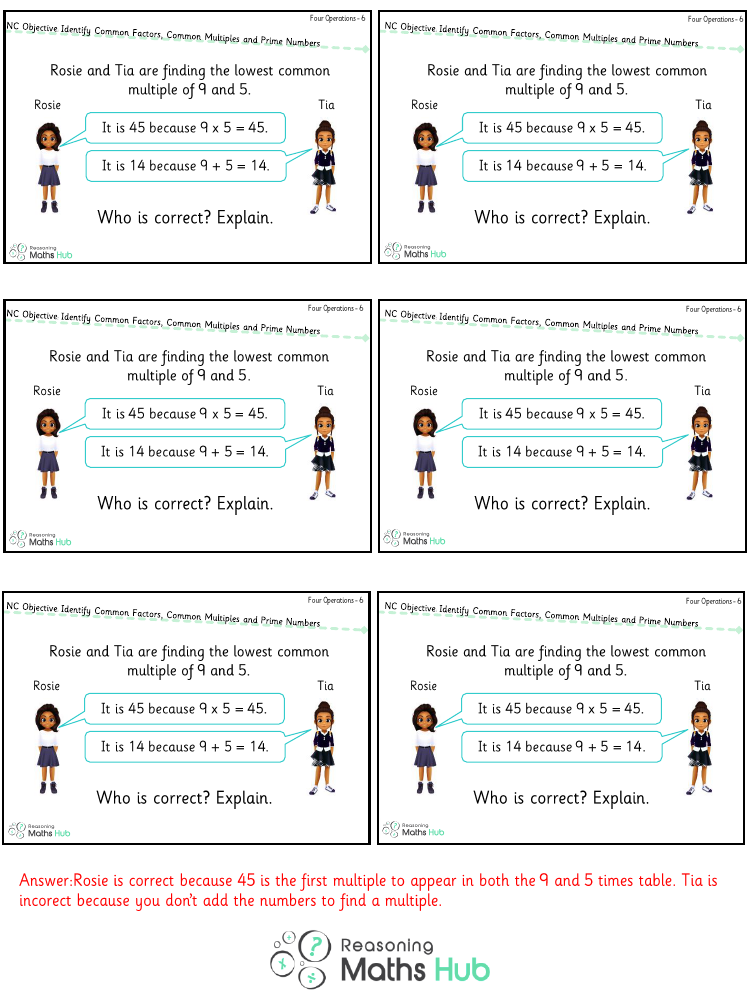Identify Common Factors, Common Multiples and Prime Numbers 4 - Reasoning

Maths Resource Description
When exploring the concepts of common factors, common multiples, and prime numbers, students are delving into fundamental aspects of number theory. Common factors are numbers that divide exactly into two or more numbers. For example, the common factors of 12 and 18 include 1, 2, 3, and 6. These are numbers that fit into both 12 and 18 without leaving any remainder. Understanding common factors is crucial for simplifying fractions and solving problems that involve finding the greatest common divisor of a set of numbers.
Common multiples, on the other hand, are numbers that are multiples of two or more numbers. For instance, the first few common multiples of 3 and 4 are 12, 24, and 36. These are numbers that both 3 and 4 can multiply into. Identifying common multiples is particularly useful when solving least common multiple problems or when working with addition and subtraction of fractions with different denominators. Lastly, prime numbers are numbers greater than 1 that have no divisors other than 1 and themselves. Examples of prime numbers include 2, 3, 5, 7, and 11. Recognizing prime numbers is essential in various areas of mathematics, including the study of prime factorization and the understanding of the building blocks of all numbers.